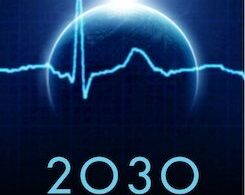The following is translated from the introduction to the *’Repertoire de themes et de matière médicale dynamique’, a repertory compiled by Dr. Guy Loutan from the work of a number of groups using the method of Dr. Masi to study the materia medica. It also proposes conclusions about a large number of remedies that have been studied and is to be used as a work document.
The study of the materia medica using pathogenesis and cured cases.
The materia medica can be studied in an objective way, using the symptoms in the books as they stand. In that case, when a patient gives us a symptom that is not present in the books, we cannot use it.
We can also approach the objective data base, which is the materia medica, and try to extract a more profound sense or meaning. This offers an advantage: the sense we perceive behind a patient’s words or symptoms can also be perceived behind the symptoms in the materia medica.
When Hahnemann said in the 3rd aphorism that the doctor must “einsehen” examine, comprehend, perceive what needs to be cured”, the word “perceive” indicated that the symptoms of the patient should not be taken on first impression, but that we have to extract a deeper sense and comprehend the symptoms. The symptoms to which we find a precise equivalent are insufficient to achieve a lasting cure, even when this technique offers us some very good improvements.
Dr. Thomas Pasquero wrote in his book Homeopatia (2nd ed., 1983, ed. El Ateneo p53) “..it is because the purpose of the doctor is to cure the patient that Hahnemann indicates this very precisely in the 3rd aphorism. It is essential that the doctor knows precisely what needs to be cured in the patient. To find out what needs to be cured, it is necessary to explain the symptoms, to understand the genesis of the psychological, physiological and pathological signs that are presented to us and study the etiology of the actual process.” “In this sense, the simple application of the law of similars is not sufficient to choose a remedy.”
We have to always ask ourselves, what does the patient want to say, what is the significance of what the patient says? What makes the patient tell us all these symptoms, what makes the patient suffer as a unique individual, who cannot be divided into his different organs, symptoms or diagnosis? What sensation, what suffering, can I sense based on what I have heard?
It is the profound sense of the unity of message-patient, and what we can call the minimum symptom of maximum value. This is the only point which can assure a prescription for cure.
Using the materia medica, repertories and cured cases which have confirmed our understanding of remedies, we can suggest syntheses of remedies and themes of sensation, suffering and types of problems offered by the “remedy-patients”. These syntheses are modifiable and temporarily help to achieve an opening and stimulate reflection and analysis, but are not recipes for quick prescriptions.
Local and mental symptoms.
Even though it may be interesting to practise this ultra-unicist homeopathy based on the mental symptoms, which can be understood without interpretation, it is indispensable to remember that a precise, personal, local or general symptom with good modalities is often more reliable in making a good prescription than the impression by the practitioner of the patient’s problem and its remedy equivalent. The symptom is indisputable whereas the problem of the patient and the remedy equivalent are presumed and based on the education of the practitioner.
The experience of studying the dynamic miasms of the materia medica shows us more and more the importance of symptoms and physical modalities, which often are symbolic in synergy with the problems of the patient (i.e. the confusion of Verat alb ameliorated bending forward and it’s problem of receiving the power from a superior, or Phos acid who can hear his watch better from a distance when it’s problem is about accepting that man cannot find enjoyment in immediate knowledge.)
The work towards a profound comprehension of the patient is necessary to find remedies for patients who express symptoms that are not present in the books. In any case, not all symptoms of a remedy are expressed in a patient and, in addition, not all symptoms possible to be expressed by a patient are present in the materia medica. We need the dynamic miasmatic approach to help find remedies for patients where a repertorisation will not be helpful but a clear theme is present which points to a particular remedy.
Cure-suppression.
This vision of the materia medica should allow us to reduce the cases where a remedy that corresponded to a superficial problem in the patient caused a suppression of the natural disease, because it did not correspond to the profound suffering of the patient. These cases are still all too common, where patients have been “cured” over the years of many problems using different remedies while they slowly evolved to more serious disease. Such cases confirm our conventional colleagues” belief, that homeopathy can only cure things that go away by themselves.
Our work as homeopaths is only starting, because over the last few generations due to a lack of clear useful doctrinal vision, we were not able to cure what was “worthy to cure” in our patients.
Even when the homeopathic help was mild and slowed down the aggravations of cases, real cures were still rare and misunderstood, thus difficult to reproduce. This new view on our art should re-launch the interest which homeopathy deserves, mostly through the spectacular, long term improvements obtained, which we can call real cures.
The referrals to God.
The use of God in the work of Dr. Masi should not make one believe that the dynamic miasm is only for religious people. God is used as the reference which is closest to our Western culture, to study the metaphysical problems of humanity. All mythologies, medical or political doctrines make a reference somewhere to the mystery of origin, loss of paradise, culpability, perfection, security, love, injustice. It is of course possible if the practitioner refuses the endogen origin of natural disease, this unicist approach will be difficult to apply, and his/her practice will be more peripheral.
Thomism.
Recently there have been more references to the work of Thomas d’Aquinas. This is because his work proposes many answers to human problems, the relation between our different components and between man and divinity. This anthropology is very useful in helping to focus the fundamental problem of each remedy in its possible metaphysical origin. Any other philosophic or anthropologic reference useful to increase or universalize our understanding is of course most welcome.
The symbolism of any mythology or civilisation should be able to be used to discover the sense of such and such a strangeness in the materia medica. For instance, the Mosaic law or the tradition of Iwa Pele an help us understand the dream of bats in Hamamellis.
Of course in the studies of remedies, “he” and ‘she” are interchangeable.
———————————
Dr. Guy Loutan
Switzerland
*The repertory is edited by: Editions Liegoise d”Homeopathie, 1 rue Vignoble, 4130 Esneux, Belgium, fax ++ 3243801780





